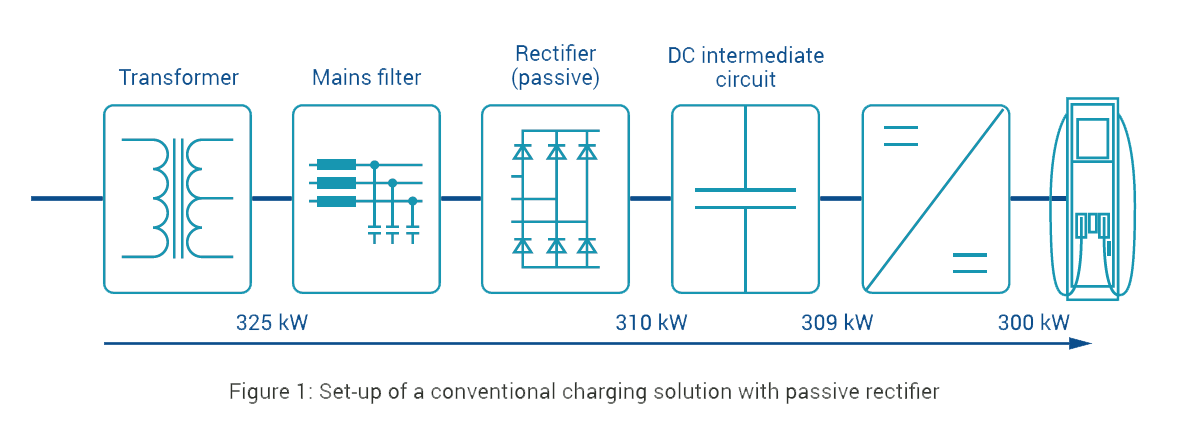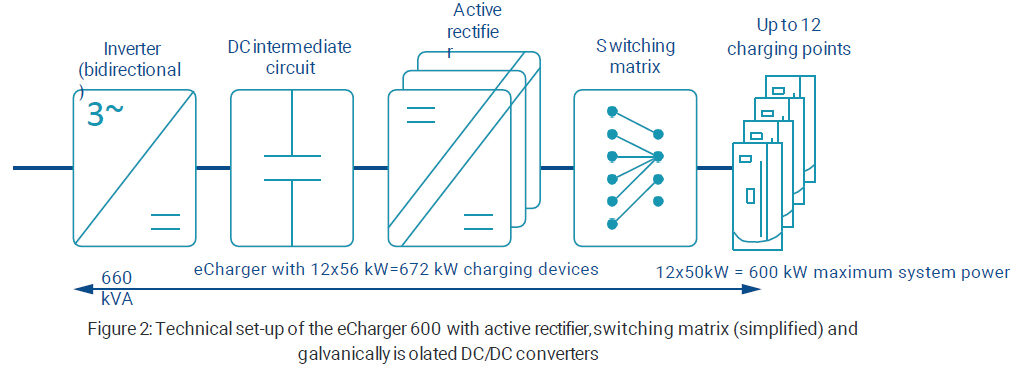Buses and chargers for rent
Clean electricity – at a calculable price
We supply electricity from our wind and solar parks and convert your bus fleet to climate-friendly electric operation at maximum efficiency and minimum cost. With an eMIS-exclusive calculation tool, we show you which e-buses and which charging infrastructure you need and which you don’t. We provide independent advice.
You rent the buses of your choice, a bidirectional charging infrastructure and the eMIS energy management system from us. We take care of the rest: subsidies, conversion of the depot, electrical installations, updates, support.
Your bus earns money at idle times
Whenever one of your buses is in idle state near our bidirectional charger, you can feed the remaining capacity of its battery to the power grid (Vehicle2Grid). In this way, you stabilise the grid – the grid operator will remunerate this. For you as a bus operator, this means that your bus earns money even when it is stationary. By the way: We give your bus batteries a second life.
No investment costs
Are you missing out on public funding? The scope of the eMIS Premium+ package is so comprehensive and unique that you may order it without any subsidies. We lower your bus operating costs per kilometer below the price of conventional e-bus operation, our word on that!
TECHNICAL CONSULTING SERVICES FOR THE CONVERSION OF BUS FLEETS TO ALTERNATIVE DRIVES
Tailor-made concepts. Individual, flexible scope of consulting.
Concept Phase
- Technology consulting & market overview (drive technology, vehicles, infrastructure)
- Forecast and presentation of future technical and commercial developments
- Recording of actual data in public transport operation
- Evaluation of lines and circulations
- Development of a vehicle / line strategy
- Development of a charging and operating concept
- Preparation of a concept for an energy management system, optionally with provision of grid services within the framework of an intelligent nodal power plant (“IKK”)
- Preparation of an application concept for energy storage for the optimal use of spare and replacement batteries or also the use of so-called “power boosters“
Funding application, tender, commissioning
- Consulting on funding opportunities
- Preparation of a detailed project outline
- Preparation of a funding application
- Preparation of a specification and tender documents
- Evaluation of offers received
- Consulting on drafting contracts with suppliers of hardware and software
- Consulting on energy- and maintenance contracts
- Technical acceptance on delivery
- Implementation and monitoring of the infrastructure installation
Operation
- Training of staff
- Recording of vehicle data during operation & evaluation
- Definition and implementation of possible adjustment measures in relation to the vehicles, in consultation with the operator and manufacturer
- Elaboration and implementation of possible adjustments to infrastructure and energy management (e.g. electricity price optimisation)
- Definition of a technically and economically optimal replacement and deployment strategy for the batteries
- Implementation and maintenance of measures e.g. of second life use of the batteries
- Operation of the infrastructure
THE ALL-AROUD CAREFREE PACKAGE IN FLEET MANAGEMENT
In case that public transport operators – due to high initial investments or due to a lack of in-house human resources – want to outsource the conversion of their fleet in the long-term, we have a special service package to offer.
We carry out all the services and project steps already described ourselves and provide the operator with vehicles, infrastructure and energy management as a complete package at attractive conditions. The aim of the rental model is to make operation costs of e-buses and diesel buses comparable or to undercut them by using the eMIS energy management, current funding opportunities from the federal and state governments and with the help of perfectly coordinated components for operating the e-buses.
With this solution we guarantee the completely worry-free conversion to a climate-neutral transport and provide the operator with the use of the latest technological developments in an optimised overall system.
Our aim always remains the maximum availability of the fleet, with maximum passenger comfort and minimum costs.
TECHNICAL PLATFORM CHARGING INFRASTRUCTURE
The eMIS eCharger is made up of three components and is designed for the highest possible flexibility in charging performance (depot and occasional charging in only one system) and primarily for grid-serving use in current and future energy systems:
- An active rectifier, commonly used in the grid connection of large wind turbines
- Galvanically isolated DC/DC converters with internal voltage range switching (475 V and 950 V)
- A switching matrix, or a parallel switching possibility of charging points (depending on the system).
The modular structure means that the solution can be adapted to individual customer requirements in addition to being used in a way that serves the grid. In a conventional system (Figure 1), all components must be designed with the full system performance in mind. In the case of the eCharger, the total charging power can differ from the grid connection power. At the charging points, the charging power of a depot charge or an occasional charge can be set as required. Both plug-in and pantograph charging systems are also possible.
The system’s interfaces are designed in such a way that, in addition to the hardware, it can be controlled by the eMIS’s own energy management system IKK (Intelligent Node Power Station) and by the grid operator, and that system services can be provided by the charging infrastructure.
Bidirectional charging within the meaning of vehicle-to-grid is no problem with the eCharger.
Conventional charging solutions are designed in the same way as electronic power supplies (laptop, mobile phone) and are normally coupled to the grid by means of passive diode rectifiers. This topology has been adapted for the first generations of vehicle chargers (whether stationary or on-board chargers). Rectifiers of this type, however, only permit control of the flow from the mains to a very limited extent. A voltage support by reactive power, a fault ride-through or an energetic recovery is not possible.
Active rectifier
An active rectifier is a 4-quadrant converter allowing both reactive power exchange as well as active
power exchange in both directions. Advantages of the eCharger:
– Technology tested for many years (common with motor drives)
– Conventional technology for grid connection of wind and solar plants
– Uses an ENERCON wind turbine converter, which has been installed hundreds of thousands of times worldwide
– Fulfils all relevant current and future grid codes and features special grid properties
Galvanically isolated DC/DC converter
The use of ultra-modern silicon carbide converters with a high-frequency transformer ensures that the
necessary galvanic isolation is achieved. The resulting benefits:
– A transformer for galvanic isolation at the input can be dispensed with
– The connection (if available) can be made directly to a low-voltage distribution system (alternatively, the distribution can be shared with other loads)
– Both 400 V and 800 V vehicles can be charged without restricting the power output thanks to the
internal voltage range switching
– Exceptionally cost-effective and low-loss transducer (very high efficiency) thanks to the use of SiC
technology
– Can be fitted unidirectionally as well as bidirectionally (identical form factor and same circuit technology
of the converters)
Switching matrix
The option of connecting the converters in parallel at the output by means of a switching matrix or parallel switching paths means that the charging power of the converters can be bundled up to a power of 350 kW (600 kW for pantograph solutions). In the case that some vehicles have not yet reached the charging point, the charging power of vehicles that are already charging can be temporarily increased. This means that a company can use the system both for depot charging at night and to quickly recharge individual buses with an occasional charge at midday if required, so that a longer distance performance is possible during the day.


